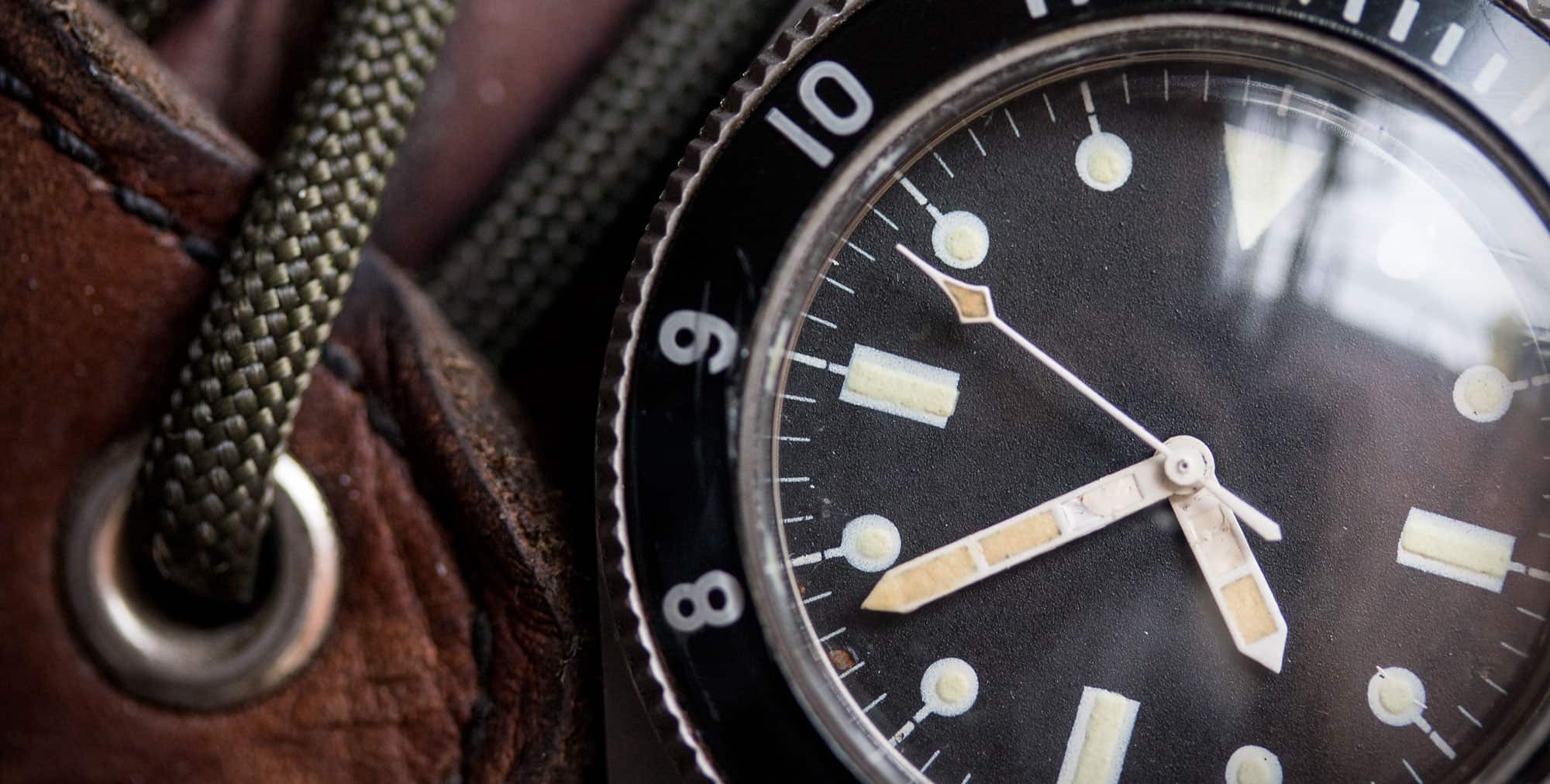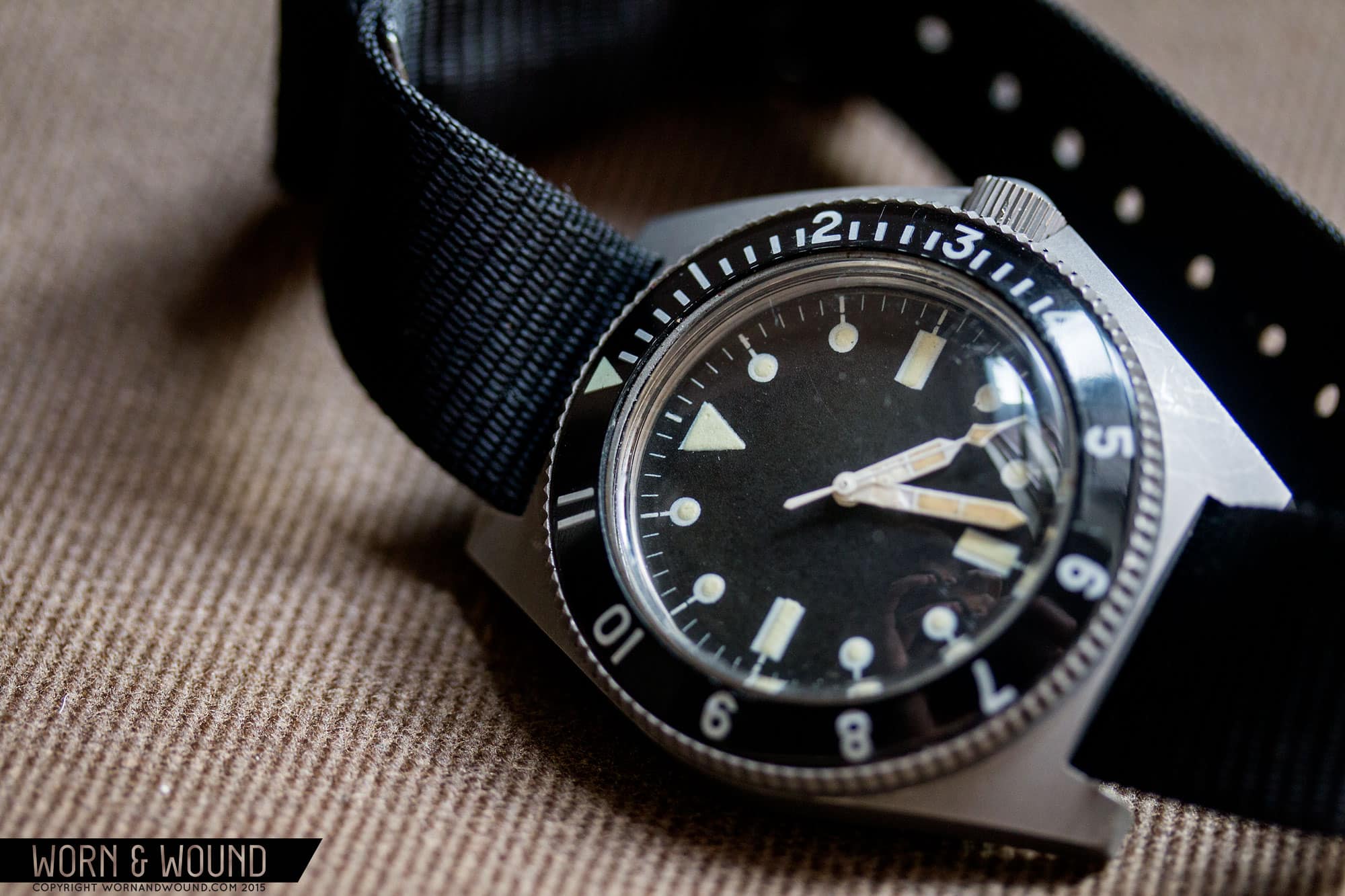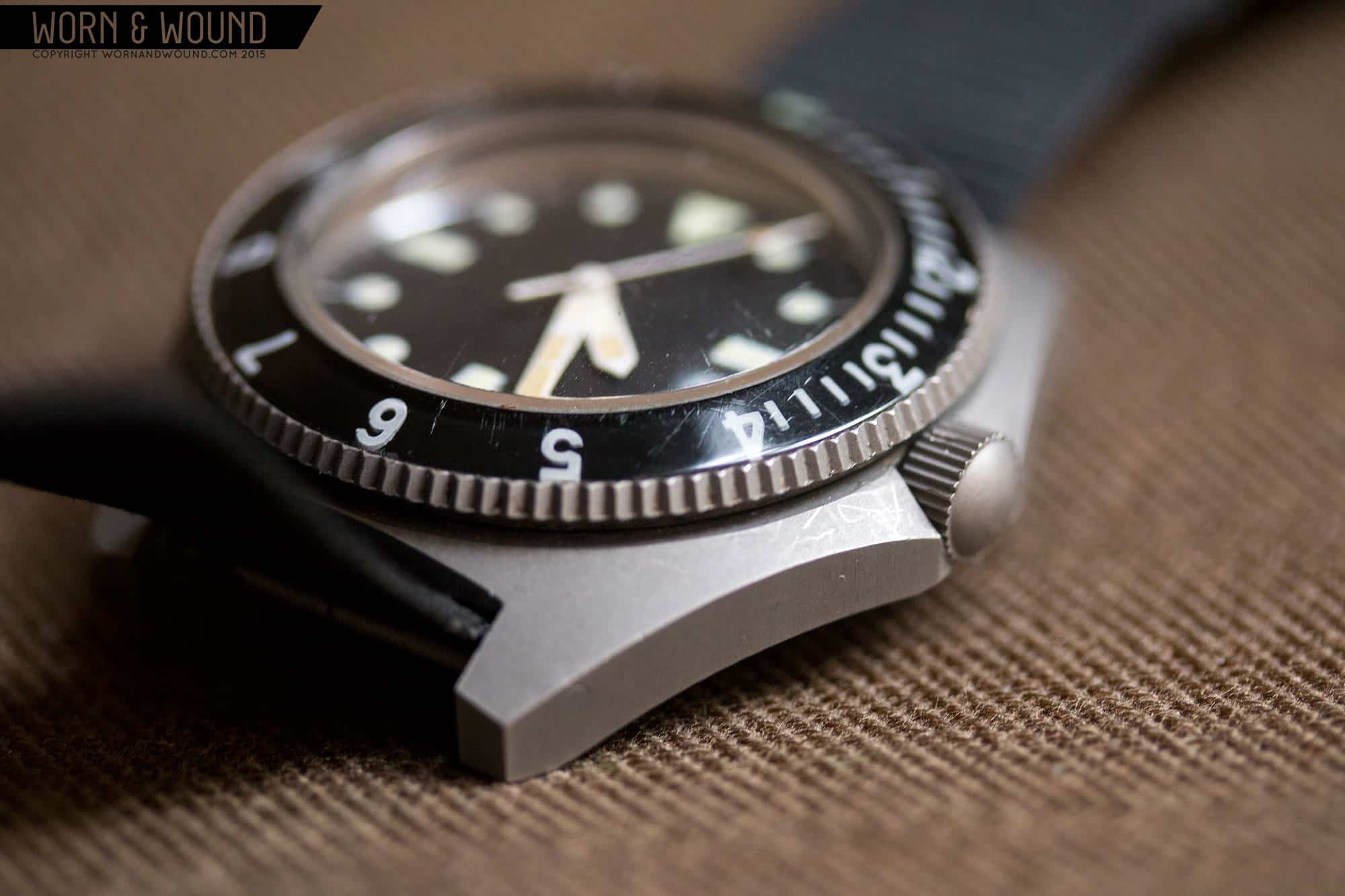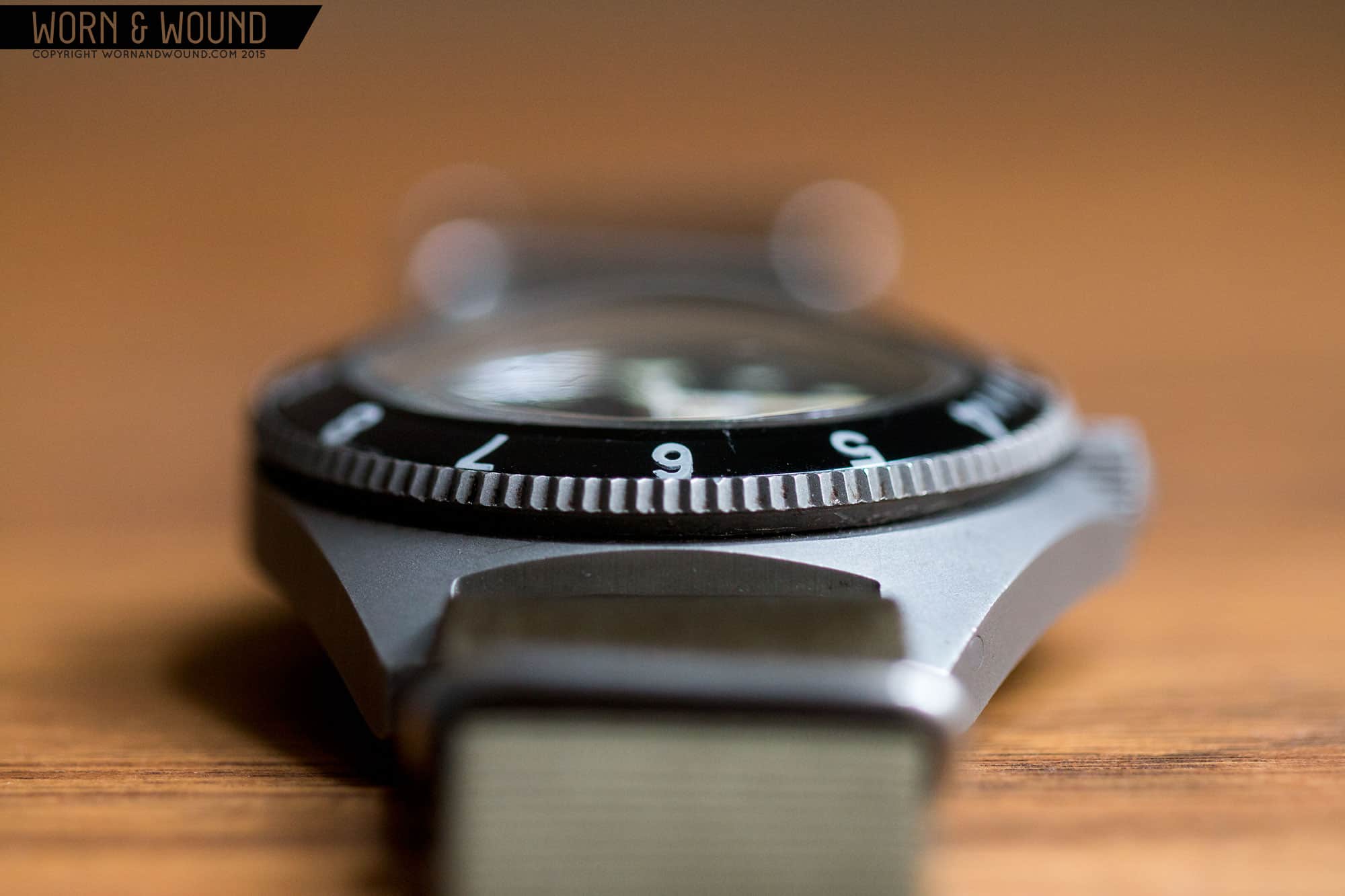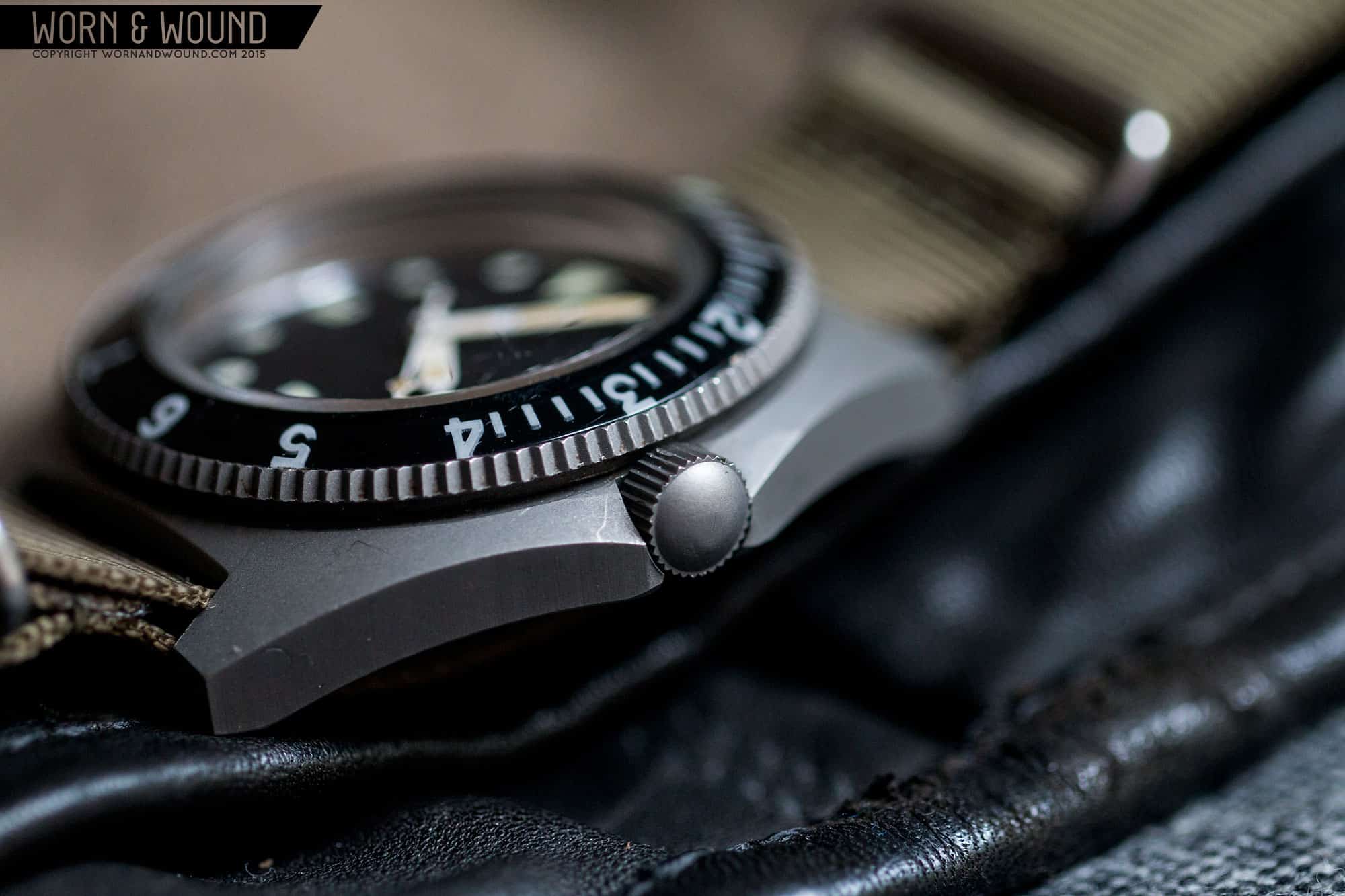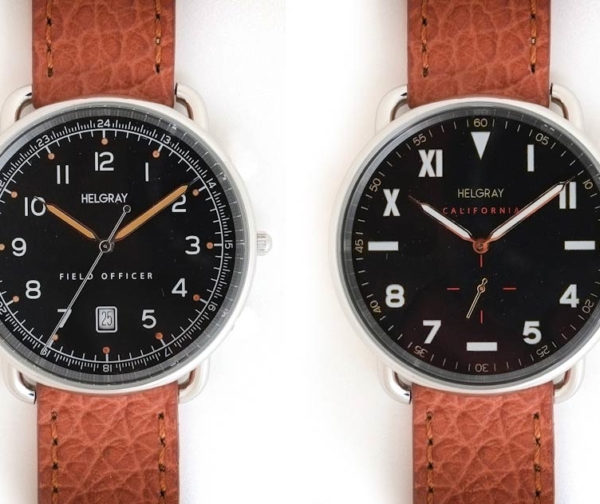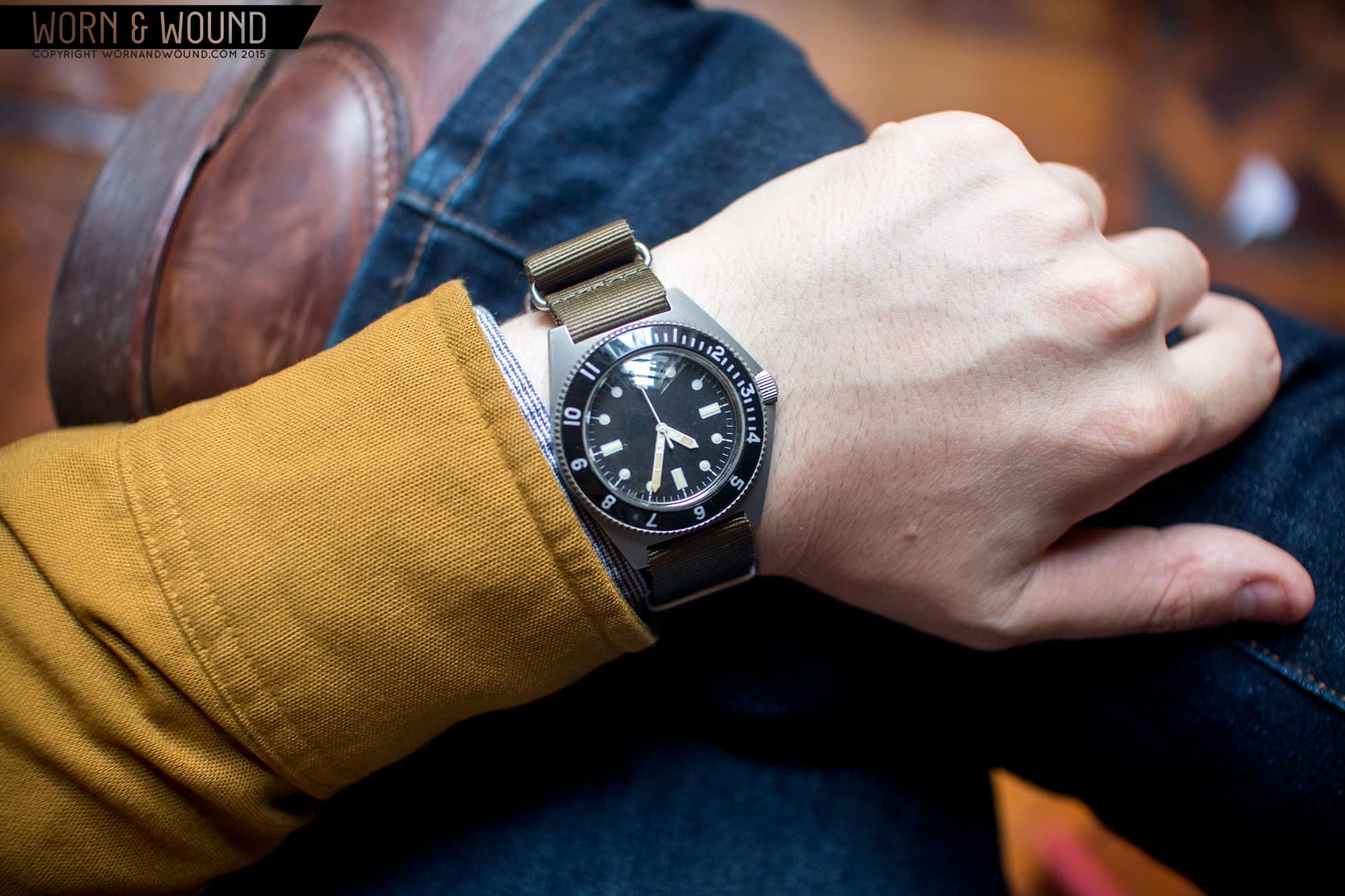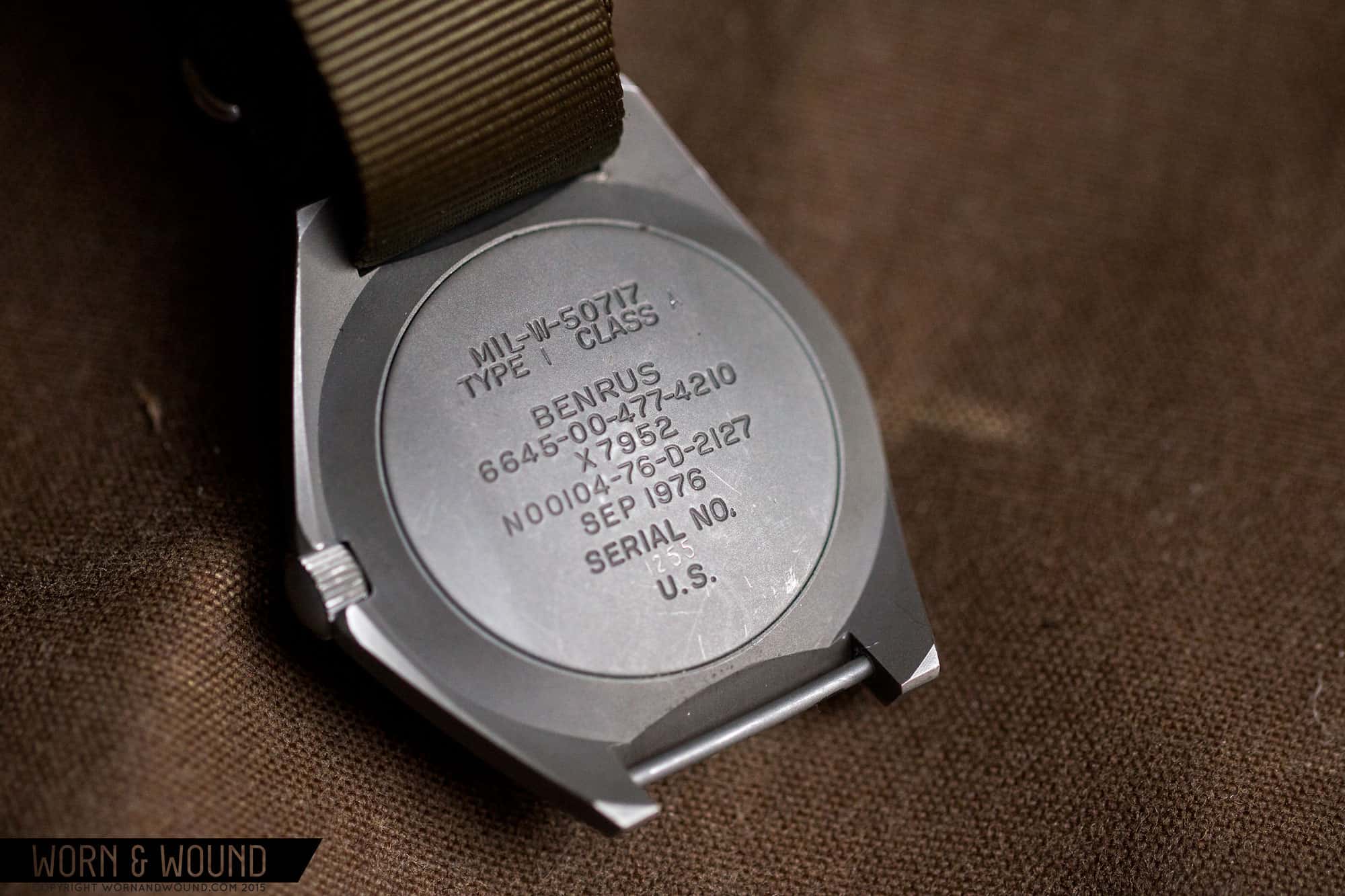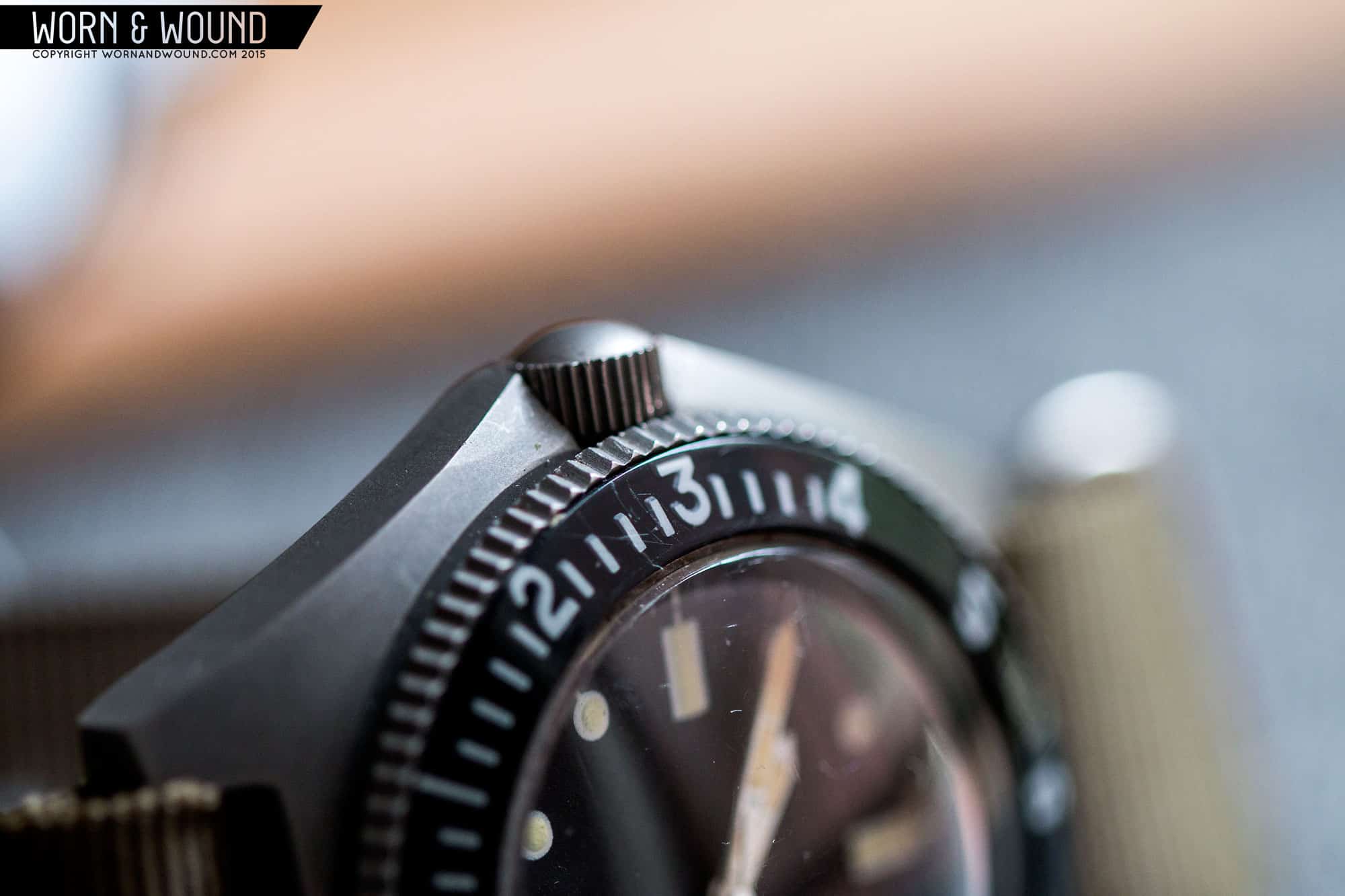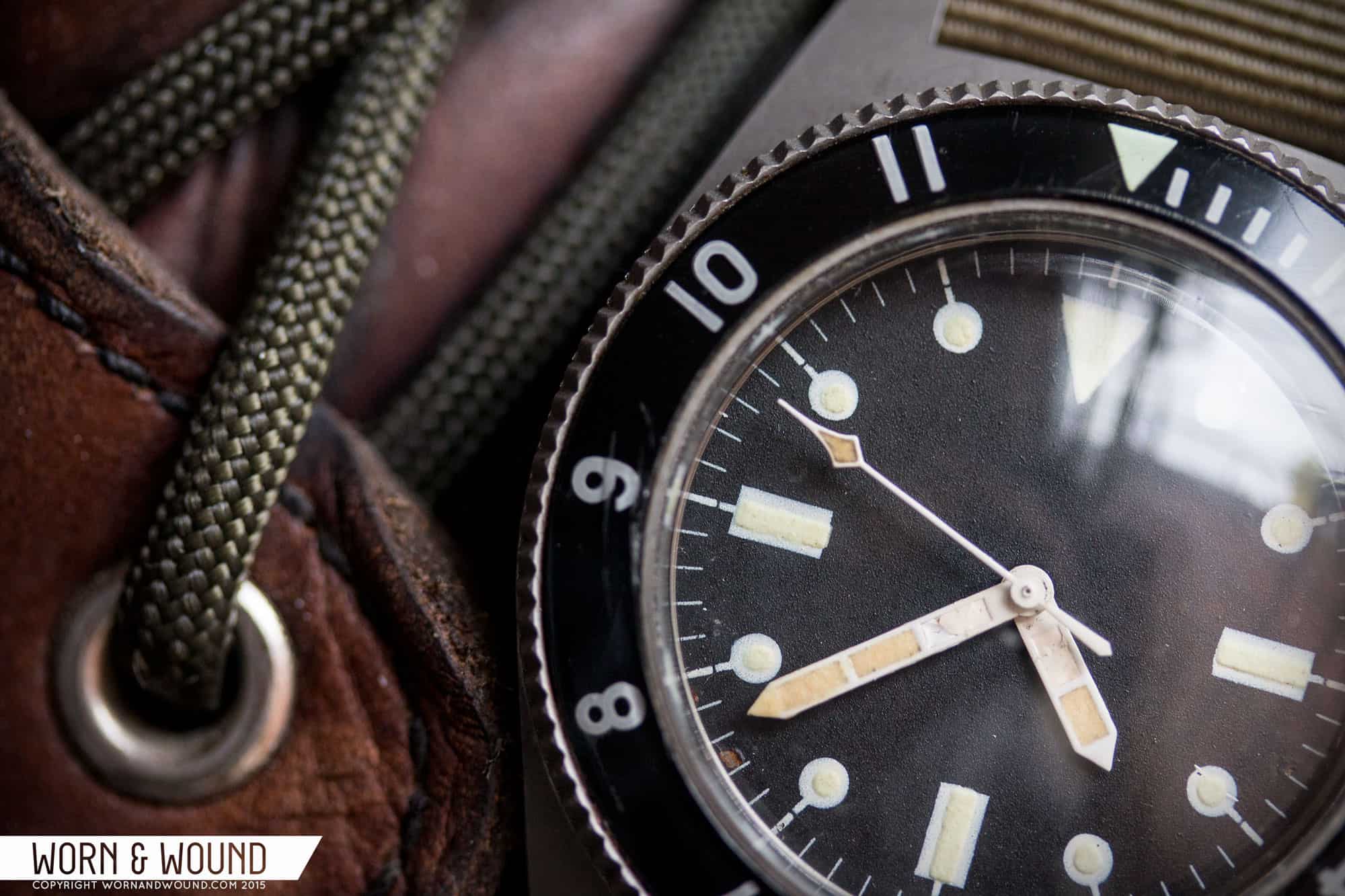These watches wear very comfortably, despite being relatively large and heavy. Fixed bars force the use of pull-through or open-ended straps, but it’s hard to find a better look than one of these on a black NATO. They have ridden the wave of milwatch popularity, which, of course, means increased prices and copycats. However, some of the remakes and re-imaginings are quite good, like the Paradive from MKII or even the Marathon Navigator.
![BENRUS_TYPE_I_18]() Benrus Type Is and IIs were produced for nearly a decade, from 1972 to 1980. In all, there were a little over 9,000 Type II Class As produced, along with roughly 6000 Type I Class As and about 1000 Type II Class Bs. There also exist a very small number of “sterile” Type Is – these watches don’t have any of the military stamped markings on the caseback and instead have a single engraved serial number. The collector community has mostly agreed that these sterile versions were pre-production versions of the watch that made it out into military use. Of course, watch nerds love a good story, so you’ll often hear how these watches were issued to Navy SEAL teams and other Special Operations units in the Army and CIA, since the lack of military markings on the case meant that the watch (and thus its wearer) could not be identified as American.
Benrus Type Is and IIs were produced for nearly a decade, from 1972 to 1980. In all, there were a little over 9,000 Type II Class As produced, along with roughly 6000 Type I Class As and about 1000 Type II Class Bs. There also exist a very small number of “sterile” Type Is – these watches don’t have any of the military stamped markings on the caseback and instead have a single engraved serial number. The collector community has mostly agreed that these sterile versions were pre-production versions of the watch that made it out into military use. Of course, watch nerds love a good story, so you’ll often hear how these watches were issued to Navy SEAL teams and other Special Operations units in the Army and CIA, since the lack of military markings on the case meant that the watch (and thus its wearer) could not be identified as American.
![BENRUS_TYPE_I_15]() True or not, it’s a good story, and, along with the scarcity, drives the prices of the sterile version to the top of the Benrus price list – one reportedly sold online last week for over $4000. Below that are Type Is in good condition – right now they usually go for $2000-3000, depending on condition. Type II Class As are the most common version, and today they typically bring $1500-3000, again depending on condition (expect to add a couple hundred bucks for the unlumed Class B version).
True or not, it’s a good story, and, along with the scarcity, drives the prices of the sterile version to the top of the Benrus price list – one reportedly sold online last week for over $4000. Below that are Type Is in good condition – right now they usually go for $2000-3000, depending on condition. Type II Class As are the most common version, and today they typically bring $1500-3000, again depending on condition (expect to add a couple hundred bucks for the unlumed Class B version).
![BENRUS_TYPE_I_28]() As both a military watch and a vintage dive watch, the Benrus MIL-W-50717 Type I and Type II dive watch delivers high quality and great style for a manageable price (at least compared to other 1970s military dive watches from across the pond). Finding one is fairly easy – there are usually a few for sale at any given time on online auction sites, as well as in the sales pages of most popular watch forums. For more information about these watches, and for a good source to pick one up, check out the Military Watch Resource at broadarrow.net.
As both a military watch and a vintage dive watch, the Benrus MIL-W-50717 Type I and Type II dive watch delivers high quality and great style for a manageable price (at least compared to other 1970s military dive watches from across the pond). Finding one is fairly easy – there are usually a few for sale at any given time on online auction sites, as well as in the sales pages of most popular watch forums. For more information about these watches, and for a good source to pick one up, check out the Military Watch Resource at broadarrow.net.
Watch courtesy of Jed Chevalier (@watchsafari)
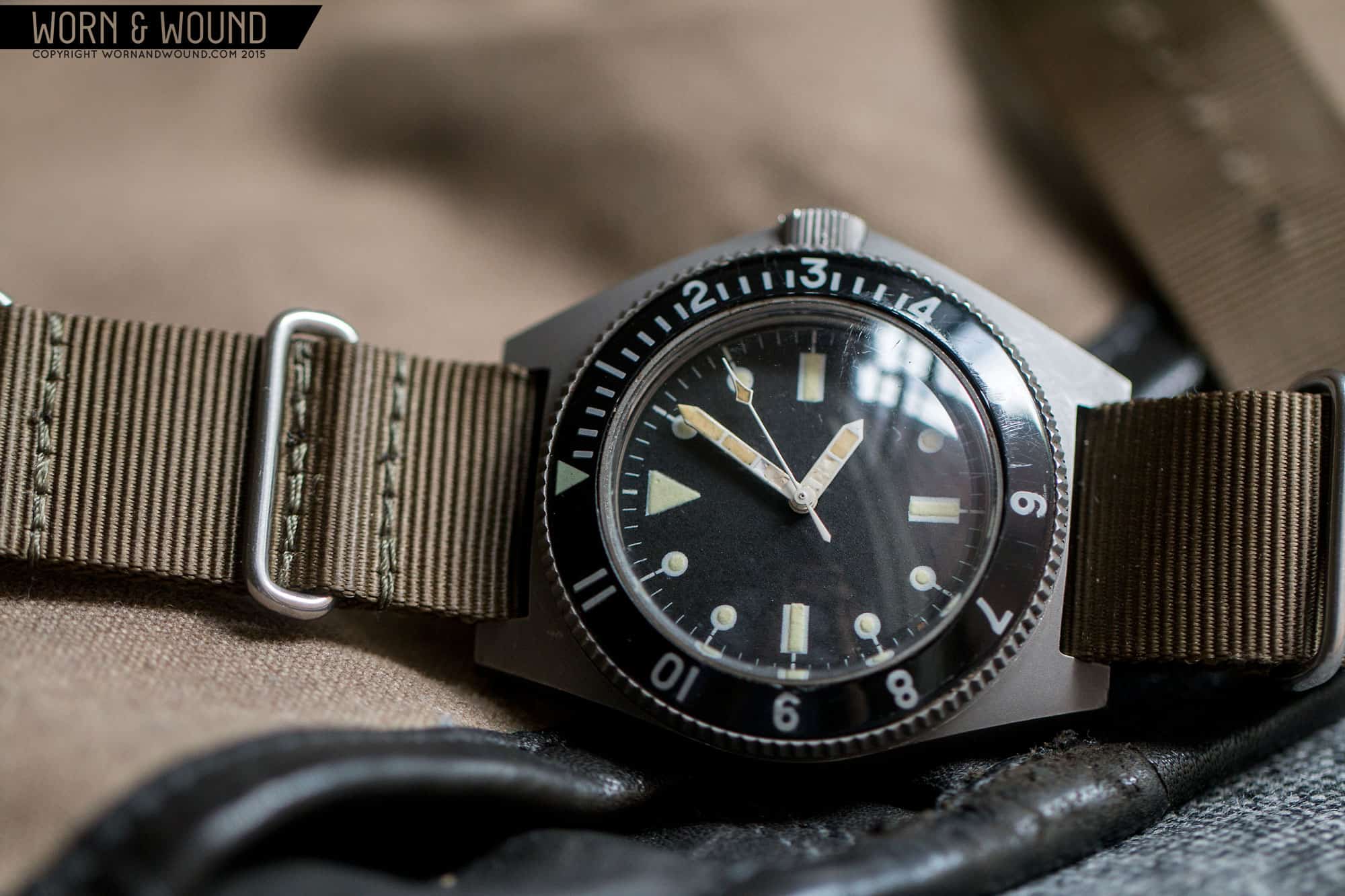 In the early 1970s, while the British were issuing their now-famous, essentially off-the-shelf Swiss military dive watches, American forces wrote MIL-W-50717, a military specification that outlined all the design details they were looking for in a diving watch. Benrus, who had been producing field watches for the US military since the early 1960s, answered the mail with the watches you see here.
In the early 1970s, while the British were issuing their now-famous, essentially off-the-shelf Swiss military dive watches, American forces wrote MIL-W-50717, a military specification that outlined all the design details they were looking for in a diving watch. Benrus, who had been producing field watches for the US military since the early 1960s, answered the mail with the watches you see here.








 Featured Videos
Featured Videos




